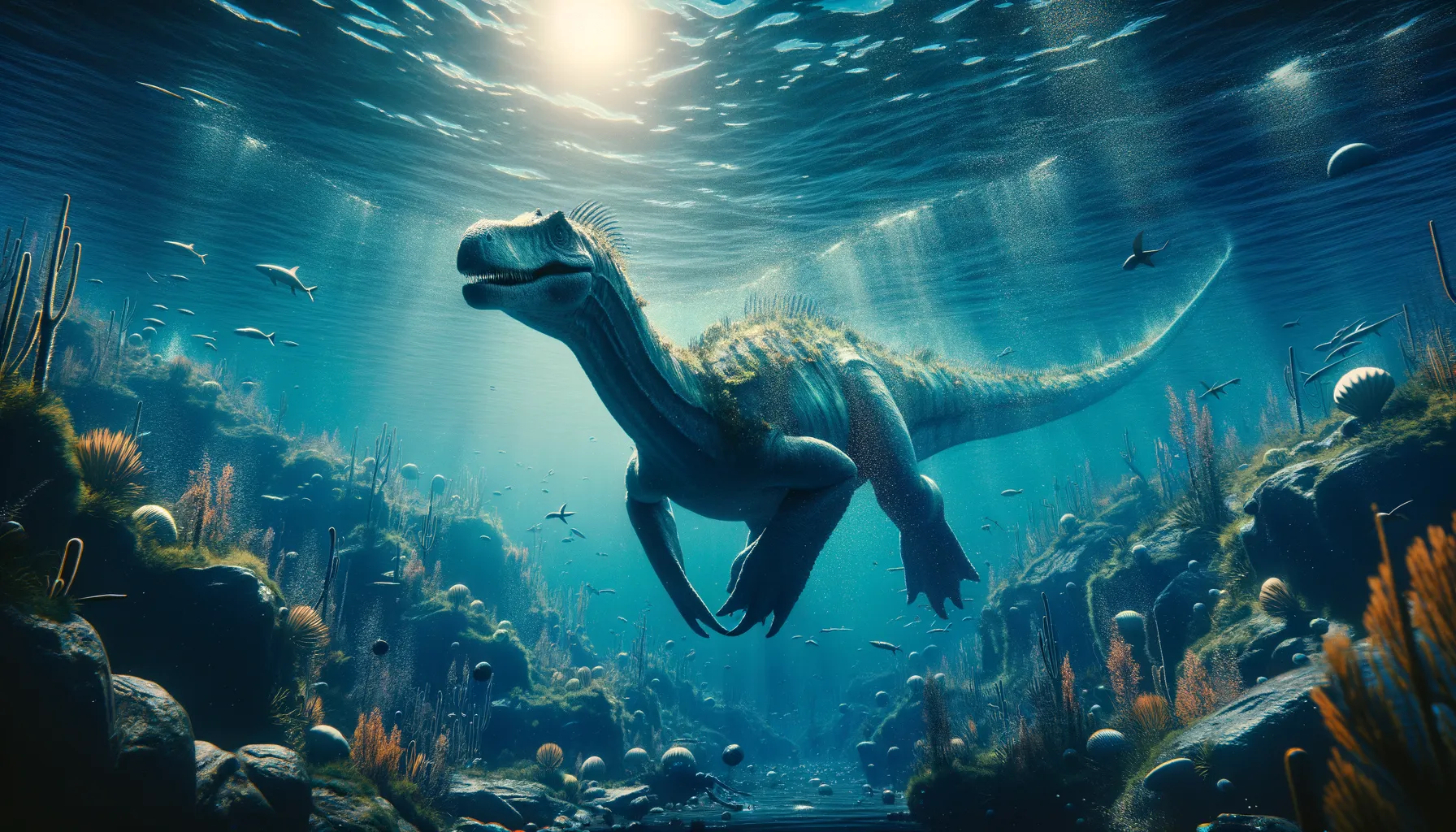
Nectosaurus
Masters of ancient ocean depths.
Period
Triassic
Length
Information is not available.
Height
Information is not available.
Weight
Information is not available.
Nectosaurus is actually a marine reptile, not a dinosaur. It was a member of the extinct group of reptiles known as ichthyosaurs, which thrived during the Mesozoic era. Found in ancient ocean environments, these creatures were streamlined and adapted to a life of swimming. Their fossils, like those of dinosaurs, provide clues about the Earth's past, but they occupied different ecological niches and originated from different evolutionary lineages.
Diet
Nectosaurus was likely a carnivore, feeding primarily on fish and other small marine organisms. Its streamlined body helped it catch swift prey in the ocean.
Hunting
Nectosaurus would have used its agility to pursue and capture quick-moving marine prey. It may have employed tactics similar to modern dolphins or larger fish to hunt effectively.
Environmental challenges
Nectosaurus faced challenges such as fluctuations in ocean temperatures and changes in sea levels. Predation by larger marine reptiles or sharks might have also posed a risk to its survival. Additionally, finding adequate food resources would have been a constant concern in the competitive ancient seas.
Speed
Information is not available.
Lifespan
Information is not available.
First discovery
Information is not available.
Fun Facts
- Nectosaurus was a prehistoric marine reptile that lived during the Late Triassic period.
- Unlike dinosaurs, Nectosaurus was part of a group called ichthyosaurs, which means 'fish lizards'.
- Nectosaurus had a sleek, streamlined body similar to modern dolphins, allowing it to swim swiftly.
- It is believed that Nectosaurus had large eyes, helping it see better in the dark depths of the ocean.
- Fossils of Nectosaurus have been found primarily in North America, offering insights into its habitat.
- Like many marine reptiles, Nectosaurus breathed air and would have surfaced regularly to breathe.
- Nectosaurus likely fed on small fish and cephalopods, using its pointed snout to catch prey.
Growth and Development
Growth patterns in Nectosaurus, like many marine reptiles, would have been influenced by the availability of food and their ability to outgrow potential predators. Their development from juveniles to fully mature adults would have required significant nourishment from their marine environment. Adaptations for efficient swimming might have developed early in their life cycle to enhance survival.
Habitat
The Nectosaurus primarily inhabited ancient oceans, where it thrived in marine environments. It likely preferred areas rich in marine life to ensure a steady food supply. These habitats would have included shallow coastal waters as well as deeper oceanic regions.
Interaction with other species
Nectosaurus shared its habitat with a variety of other marine organisms, competing for food sources such as fish. It likely interacted with other marine reptiles as well as contemporaneous species of fish and cephalopods. These interactions would have shaped its ecological role within the marine ecosystem.
Natural lifespan
Information about its natural lifespan is not available.
Reproduction
Nectosaurus, like other ichthyosaurs, probably gave birth to live young. This method of reproduction was advantageous in aquatic environments, bypassing the need for laying eggs on land. Parental investment after birth is unclear, but the young likely had to fend for themselves shortly after being born.
Social behaviour
Information about Nectosaurus social behavior is limited, but some evidence suggests they may have traveled in pods similar to modern dolphin social structures. This social behavior could have provided benefits like increased protection from predators and cooperative hunting techniques.
Fossil locations
Fossils of Nectosaurus have been found in areas that were once part of ancient ocean beds. The precise location details of these fossils are limited, indicating their presence in regions that once supported marine ecosystems. These fossil discoveries help paleontologists understand the distribution of marine reptiles during the Triassic period.
